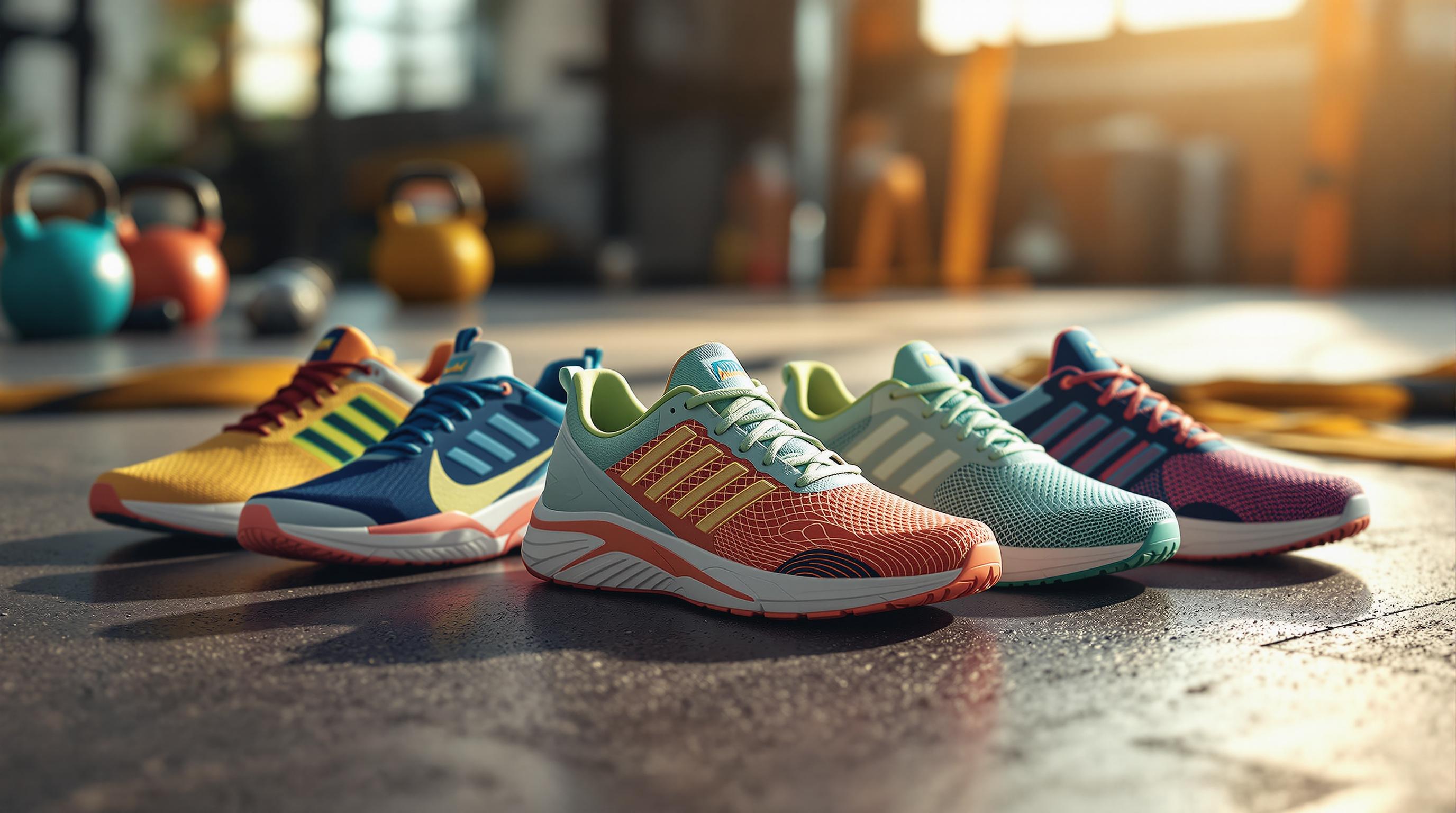Want to crush your Hyrox race? Start with the right training plan. Whether you're a beginner aiming to finish your first race or an advanced athlete chasing podium finishes, your plan should match your fitness level and goals. Here's what you need to know:
- Beginners: Focus on building endurance, learning basic movements, and recovering well. Start with 2-3 running sessions and basic strength training weekly.
- Intermediate: Sharpen race techniques and improve transitions with 3-4 runs, 2-3 strength sessions, and skill-specific workouts weekly.
- Advanced: Train intensely with race-specific workouts, structured cycles, and recovery periods to peak on race day.
Key tip: Running is the most crucial part of Hyrox prep - track your 10K time to gauge fitness. Combine this with functional fitness exercises like sled pushes and burpees for a balanced approach. Ready to dive deeper? Let’s break it all down.
The Only Hyrox Video You Need: Full Hyrox Guide For Beginners
Know Your Fitness Level and Goals
Before diving into a Hyrox training plan, take a good look at where you stand fitness-wise and what you want to achieve. This step helps make sure your training is aligned with your current abilities and your desired outcomes.
How to Evaluate Your Fitness Level
Running makes up half of the race and plays a huge role in your overall endurance. A good way to gauge your base fitness is by tracking your 10K time. For beginners, completing it in around 60 minutes is a solid benchmark, while advanced athletes aim for sub-40 minutes [1].
You’ll also want to assess your functional fitness. Focus on three main categories:
- Cardio capacity: Activities like rowing and running.
- Strength movements: Sled push/pull and sandbag carries.
- Technical skills: Exercises such as burpees, wall balls, and lunges.
"Running is by far the most important exercise to do when preparing for a Hyrox race", says Meg Jacoby, 2024 Hyrox World Champion [4].
If you’re unsure where to start, working with a coach can be a game-changer. They can analyze your form, spot weaknesses, and guide you toward better technique [1].
Defining Your Hyrox Goals
Once you’ve figured out your fitness level, it’s time to set clear, actionable goals. Think about both short-term targets - like finishing your first race - and long-term aims, such as mastering specific movements like burpees or sled pushes.
| Experience Level | Goals | Training Focus |
|---|---|---|
| Beginner | Finish your first race | Build endurance and learn basics |
| Intermediate | Improve race time | Sharpen running and transitions |
| Advanced | Compete for top spots | High-intensity, focused training |
Keep track of your progress using metrics like heart rate and workout times. This approach ensures your training evolves based on real improvements rather than just how hard you feel you’re working [1].
Types of Hyrox Training Plans
Hyrox training plans cater to different experience levels, each targeting specific fitness needs and race preparation goals. Here's a breakdown of what to expect from beginner, intermediate, and advanced plans.
Plans for Beginners
Beginner plans are designed for those tackling their first race. They emphasize building overall fitness, learning proper form, and gradually introducing Hyrox-specific movements. These plans typically include:
- 2-3 running sessions weekly, starting with shorter distances to build endurance
- Basic strength training to improve movement patterns and form
- Modified Hyrox exercises, tailored for new athletes
- Longer rest periods to ensure adequate recovery
This approach ensures a steady progression without overwhelming new participants.
Plans for Intermediate Athletes
Intermediate plans are for those looking to improve their race time. These programs combine strength and endurance training while incorporating key Hyrox elements like transitions between running and sled pushes. A typical week might look like this:
| Training Component | Weekly Focus | Purpose |
|---|---|---|
| Running | 3-4 sessions | Build endurance |
| Strength Work | 2-3 sessions | Develop functional fitness |
| Skills Practice | 2 sessions | Sharpen race techniques |
Workouts are more demanding and designed to simulate race conditions, helping athletes refine their skills and boost overall performance.
Plans for Advanced Competitors
Advanced plans are tailored for athletes aiming for podium finishes. These programs focus on intense training, detailed progression, and race-specific preparation. Key features include:
- Structured training cycles to ensure peak performance on race day
- Complex strength routines targeting specific race demands
- Competition-focused workouts, mirroring actual race scenarios
- Planned recovery periods to avoid overtraining
Advanced plans require a significant time investment and often benefit from professional coaching to optimize performance and minimize injury risks.
Each plan caters to different needs and goals, so choose one that aligns with your experience, schedule, and resources.
sbb-itb-8bcd5e0
How to Choose the Best Plan for You
Selecting the right Hyrox training plan starts with considering your fitness goals, available time, and resources. Here's how you can make the best choice for your needs.
Aligning the Plan with Your Schedule and Equipment
Pick a plan that works with your schedule and the equipment you have access to. For example:
- If you have 2-3 hours per week and access to basic gym equipment, plans like Hyrox PLAN 24-25 are designed to be efficient and offer equipment alternatives.
- For those with 4-6 hours weekly and full gym access, standard plans are a better fit.
- Advanced plans are designed for 6+ hours per week and require access to complete Hyrox-specific equipment.
The Importance of Gradual Progression
A good training plan should build up intensity and complexity step by step. This approach helps you improve performance while reducing the risk of injury. Look for programs that include distinct phases, such as foundational strength, peak intensity, and tapering. Even elite athletes like Meg Jacoby follow this method, balancing intensity levels across six training days per week [4].
Coaching and Community Support
Having expert guidance and a supportive community can make a big difference in sticking to your plan. Programs like The Progrm Hyrox combine professional coaching with community interaction, helping you stay motivated, accountable, and focused on proper technique.
"Pay attention to your body's signals and include rest days to prevent injury and maintain enthusiasm" [2]
Ultimately, the best plan is one you can stick to. Think about your current fitness level, the resources you have, and your long-term goals. And remember, it's okay to adjust your plan based on how you're progressing and recovering.
Adjusting Your Hyrox Training Plan
Fine-tuning your training plan helps you avoid overtraining, break through plateaus, and improve overall performance.
Adding Recovery and Tapering Phases
Recovery and tapering are key parts of preparing for Hyrox. Plan for deload weeks every 4-6 weeks by cutting your training volume by 40-50%, but keep the intensity up.
When gearing up for race day, consider this tapering approach:
| Training Phase | Weeks Out | Volume Reduction | Focus Areas |
|---|---|---|---|
| Pre-Taper | 3 weeks | 10-15% | Keep intensity high, reduce volume slightly |
| Mid-Taper | 2 weeks | 20-25% | Race-focused workouts |
| Race Week | 1 week | 30-40% | Practice technique, light cardio sessions |
With recovery and tapering dialed in, tracking your progress will help ensure these changes are working and keeping you on track toward your goals.
Tracking Progress with Data
Monitoring key metrics is essential for making precise tweaks to your training. For Hyrox athletes, focusing on both running and functional fitness data is crucial.
Heart Rate Metrics:
- Heart rate zones during runs
- Recovery heart rate after workout stations
- Trends in resting heart rate
Performance Benchmarks:
- 1km split times during runs
- Improvements in sled pushes, sandbag carries, and other stations
- Times for completing specific workout stations
Use tools like Training Peaks to log and analyze these metrics consistently. If you notice a plateau, adjust your training volume or intensity. This data helps you refine pacing and smooth out transitions between running and functional stations - two critical parts of Hyrox success.
Conclusion: Start Your Hyrox Training Journey
Now that your training plan is set and you're tracking your progress, it's time to commit to the bigger goal - your path to Hyrox success. Running remains a key element of Hyrox preparation, as highlighted by Meg Jacoby, the 2024 Hyrox World Champion. Combine this focus with a well-structured plan to improve your endurance, strength, and race-specific skills.
Pick a plan that aligns with both your fitness level and personal goals. Whether you're diving into a beginner-friendly program or tackling something more advanced, the key is to ensure it fits your current abilities and lifestyle.
Don't overlook the importance of nutrition. Prioritize carbohydrates before training and balanced meals afterward to recover effectively [3].
Hyrox success boils down to three main elements: consistent training, tracking your progress, and having a reliable support system. Start by evaluating your fitness, setting clear goals, and choosing the right plan. With focus and consistent effort, you'll be ready to face the Hyrox challenge head-on.



